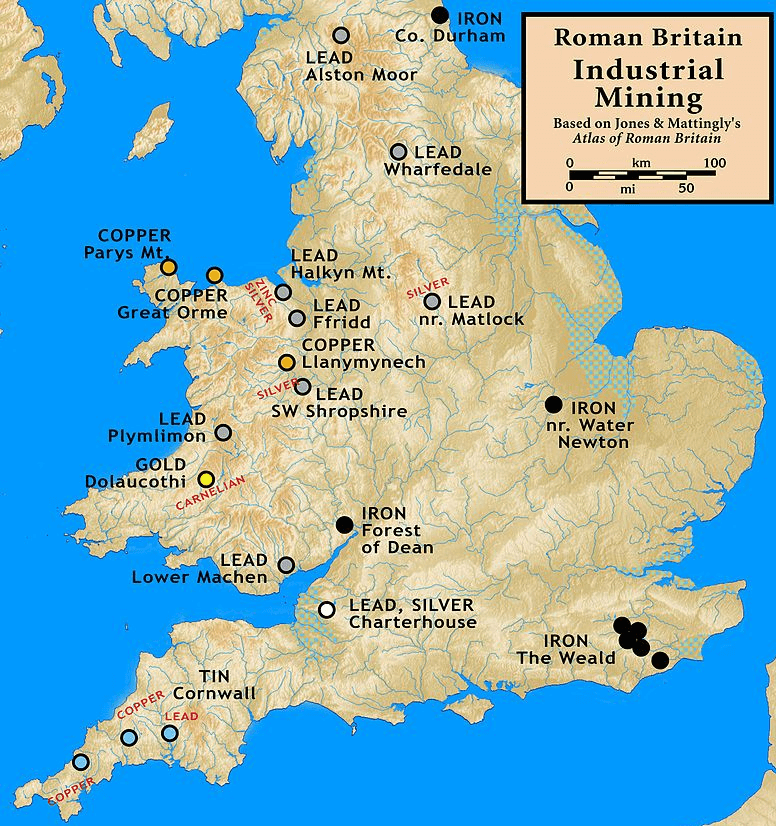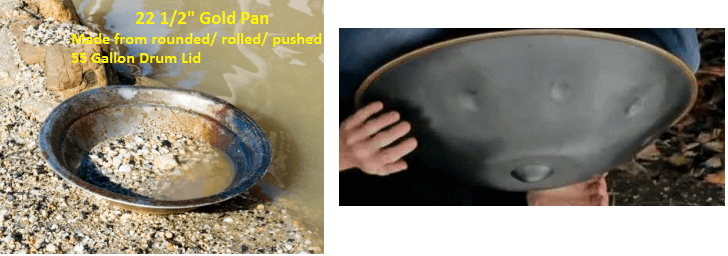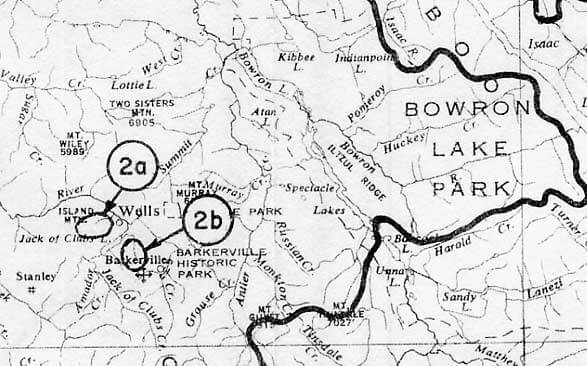 Gold panning is the cheapest method/tool (and oldest method of mining gold) of placer mining to extract gold from gold placer deposits which occur in river/stream beds. Evidence of gold panning and other placer mining methods reach way back to the times of the Romans. Early the history of metals, the Spanish used placer methods, including panning during their conquest of South America in the 1600’s. Today gold panning is limited to small scale operations that have very limited budgets and to recreational prospectors. Though gold panning is cheap it is not highly productive and thus other placer methods are generally used in larger scale ventures. Gold panning and other gold placer mining methods are used in placer deposits throughout North America in Alaska, Yukon and British Columbia.
Gold panning is the cheapest method/tool (and oldest method of mining gold) of placer mining to extract gold from gold placer deposits which occur in river/stream beds. Evidence of gold panning and other placer mining methods reach way back to the times of the Romans. Early the history of metals, the Spanish used placer methods, including panning during their conquest of South America in the 1600’s. Today gold panning is limited to small scale operations that have very limited budgets and to recreational prospectors. Though gold panning is cheap it is not highly productive and thus other placer methods are generally used in larger scale ventures. Gold panning and other gold placer mining methods are used in placer deposits throughout North America in Alaska, Yukon and British Columbia.
Gold panning is actually a very simple method. Gravel from a placer deposit, is scooped up and placed in the pan. Water is added and the pan is shook to distribute the gold to the bottom while the lighter materials such as gravel and mud are discharged. With an SG of 19, gold is a dense material and thus will easily fall to the bottom of the pan when shaken.
Gold pans are typically 13″ to 17″ in diameter and are made from metal or high impact plastic. The larger the pan, the more productive your day with be; assuming you have muscle to pan large weights. In South America (Ecuador/Peru/Guatemala, etc. etc.), where small time gold miners are panning to make the big times, they pan to make a living; the common tool is to use the lid of a large drum to make as large a pan as the can handle. As the say, they’d starve otherwise. See below: Now that is a gold producer’s gold pan! The sides are angled up at 30-45 degrees to trap the precious gold. While gold pans are cheap, they are not as productive as other placer equipment such as Rocker Boxes, Sluices and mechanical Gold Dredges. Rocker Boxes and Sluices were affordable for many prospectors but the Dredges required a major capital investment and were only used on larger scale ventures. Gold Dredges did not appear on the scene until after 1900.
The sides are angled up at 30-45 degrees to trap the precious gold. While gold pans are cheap, they are not as productive as other placer equipment such as Rocker Boxes, Sluices and mechanical Gold Dredges. Rocker Boxes and Sluices were affordable for many prospectors but the Dredges required a major capital investment and were only used on larger scale ventures. Gold Dredges did not appear on the scene until after 1900.
There is a very long history of gold panning and gold placer mining in North America. The low cost of panning and its simple process allowed for many men of very modest means to join the gold rushes in North America in the 19th century. The first major rush in North America occurred from 1848 and 1855 in north central California. Over 300,000 prospectors, otherwise known as 49ers’, descended in the area around Coloma, California. When the gold ran out, some of them made their way up to the Cariboo region in British Columbia for the gold rush  that occurred from 1858 to 1863. Over 30,000 prospectors descended on this area with the centre of activity in Barkerville. Today only some recreational placer mining goes on in this region but a hard rock mine operated by Barkerville Gold Mines in Wells BC has recently been resurrected in the past 10 years.
that occurred from 1858 to 1863. Over 30,000 prospectors descended on this area with the centre of activity in Barkerville. Today only some recreational placer mining goes on in this region but a hard rock mine operated by Barkerville Gold Mines in Wells BC has recently been resurrected in the past 10 years.
An example of this is at Wells, near Barkerville where the new Bonanza Ledge gold mine is at the headwaters of the small Lowhee Ck which was a very productive placer creek in the Barkerville gold rush.
Finally, in North America, the Klondike gold rush occurred from 1896 to 1899.100,000 men risked their lives in the harsh climate of the Yukon to seek their fortune. The activity was centred along the Klondike River between the eastern border of Alaska and Dawson City in the Yukon. This gold rush ended when gold was found in Nome, Alaska in 1899.
Gold panning and other forms of placer mining are performed in stream beds, in either active channels or inactive channels where gold is suspected. Typically gold prospectors are attracted to a particular location based on rumours, historical data and/or the presence of a hard rock gold mine nearby. The source of gold in the stream bed is held in placer deposits. Placer deposits are defined as an accumulation of valuable minerals formed by deposition by gravity during sedimentation processes. As mentioned before, gold, is a relatively heavy material which can be suspended in a fast flowing stream. Indeed, gold is much denser than gravel and other materials often suspended in stream flow. The specific gravity (which is a measure of the mineral’s density compared to water) of gold is approximately 19.3, while that of gravel is only 3.0. Consequently, when the stream flow is slowed down in locations such as the inside of a bend in a river, or at the bottom of a waterfall the gold falls out of suspension and forms a placer deposit.
The source of the placer gold – the mother lode – is often uprooted during glaciation. The gold is released through stream or glacial action. Typically the location of the placer deposit is not very far from the mother lode.
Placer deposits also exist for valuable resources such as diamonds, copper, silver and platinum. Again the key here is that the resource is dense and drops out of suspension in locations where the flow stream slows down.
Mankind has panned for gold for several millennia. Gold panning’s low cost and simple method allows for even amateurs to take up gold mining. However, it is normally non-economic and other placer methods are used in commercial ventures. Its main use now is for recreational use or especially to test an area for gold, such as an old underground gold mine dump.
